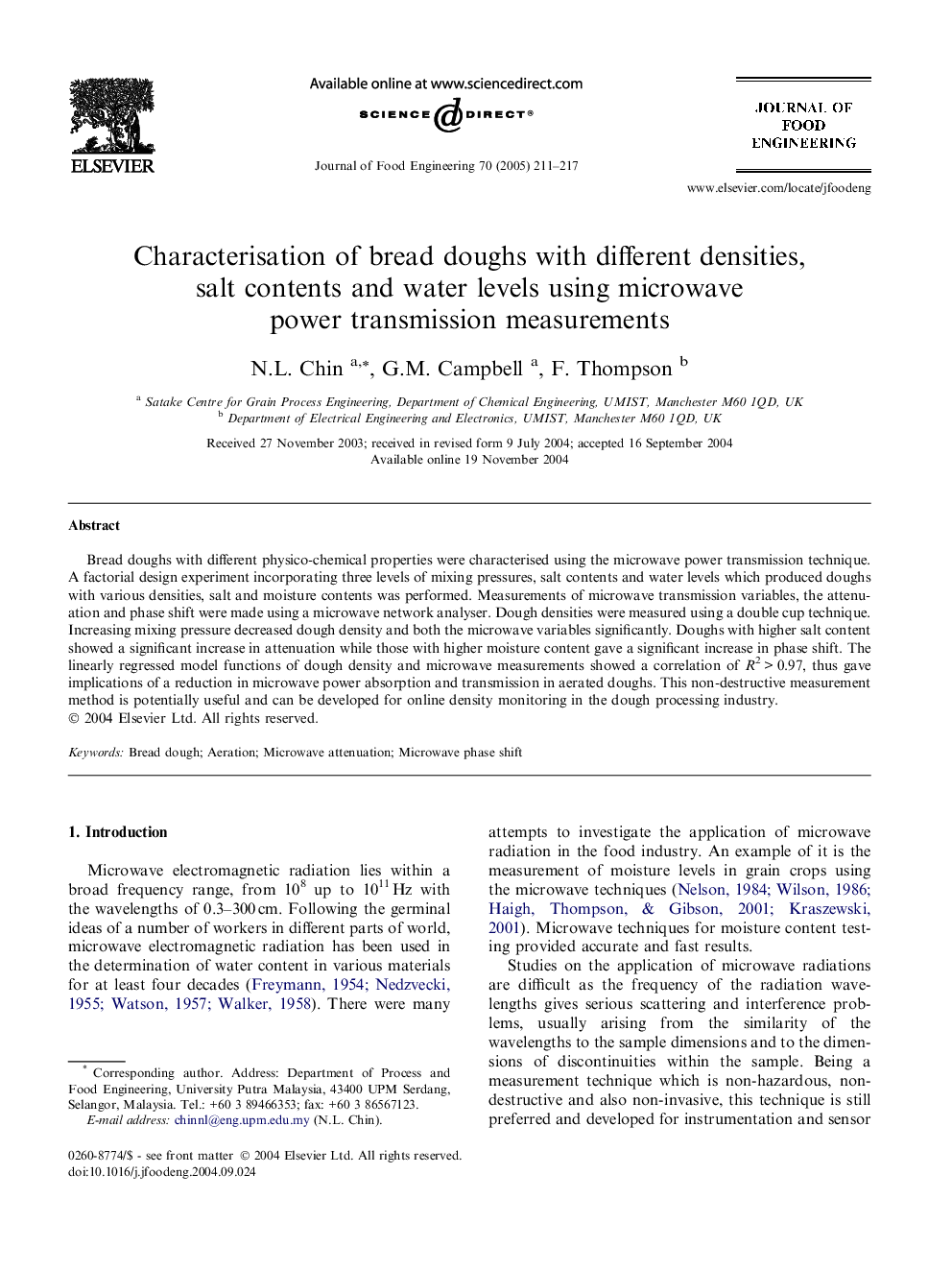| Article ID | Journal | Published Year | Pages | File Type |
|---|---|---|---|---|
| 10278588 | Journal of Food Engineering | 2005 | 7 Pages |
Abstract
Bread doughs with different physico-chemical properties were characterised using the microwave power transmission technique. A factorial design experiment incorporating three levels of mixing pressures, salt contents and water levels which produced doughs with various densities, salt and moisture contents was performed. Measurements of microwave transmission variables, the attenuation and phase shift were made using a microwave network analyser. Dough densities were measured using a double cup technique. Increasing mixing pressure decreased dough density and both the microwave variables significantly. Doughs with higher salt content showed a significant increase in attenuation while those with higher moisture content gave a significant increase in phase shift. The linearly regressed model functions of dough density and microwave measurements showed a correlation of R2Â >Â 0.97, thus gave implications of a reduction in microwave power absorption and transmission in aerated doughs. This non-destructive measurement method is potentially useful and can be developed for online density monitoring in the dough processing industry.
Related Topics
Physical Sciences and Engineering
Chemical Engineering
Chemical Engineering (General)
Authors
N.L. Chin, G.M. Campbell, F. Thompson,
